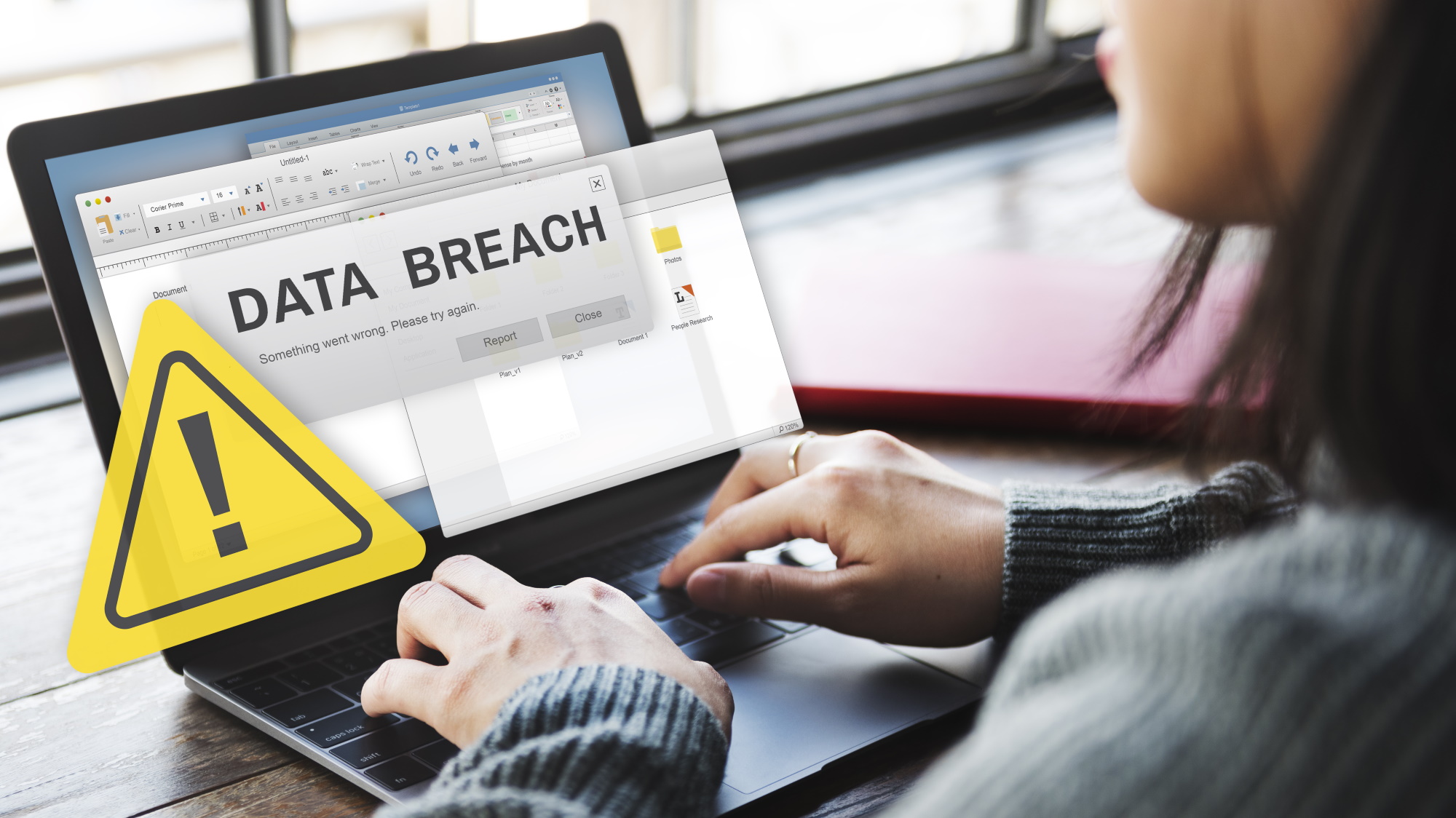Tom's Guide Verdict
TCL has modernized the physical-keyboard smartphone with the BlackBerry Key2, producing one of the year's best handsets for the productivity minded.
Pros
- +
Sleek design
- +
Helpful security features
- +
Intuitive keyboard
- +
Long battery life
Cons
- -
Too expensive
- -
Not compatible with all carriers
- -
Disappointing dual cameras
Why you can trust Tom's Guide
At first blush, last year's BlackBerry KeyOne seemed like another reminder of the brand's downfall. While not the first BlackBerry phone to run Android, the KeyOne was built by another phone maker altogether — China's TCL, which makes Alcatel phones and now builds BlackBerry devices as well.
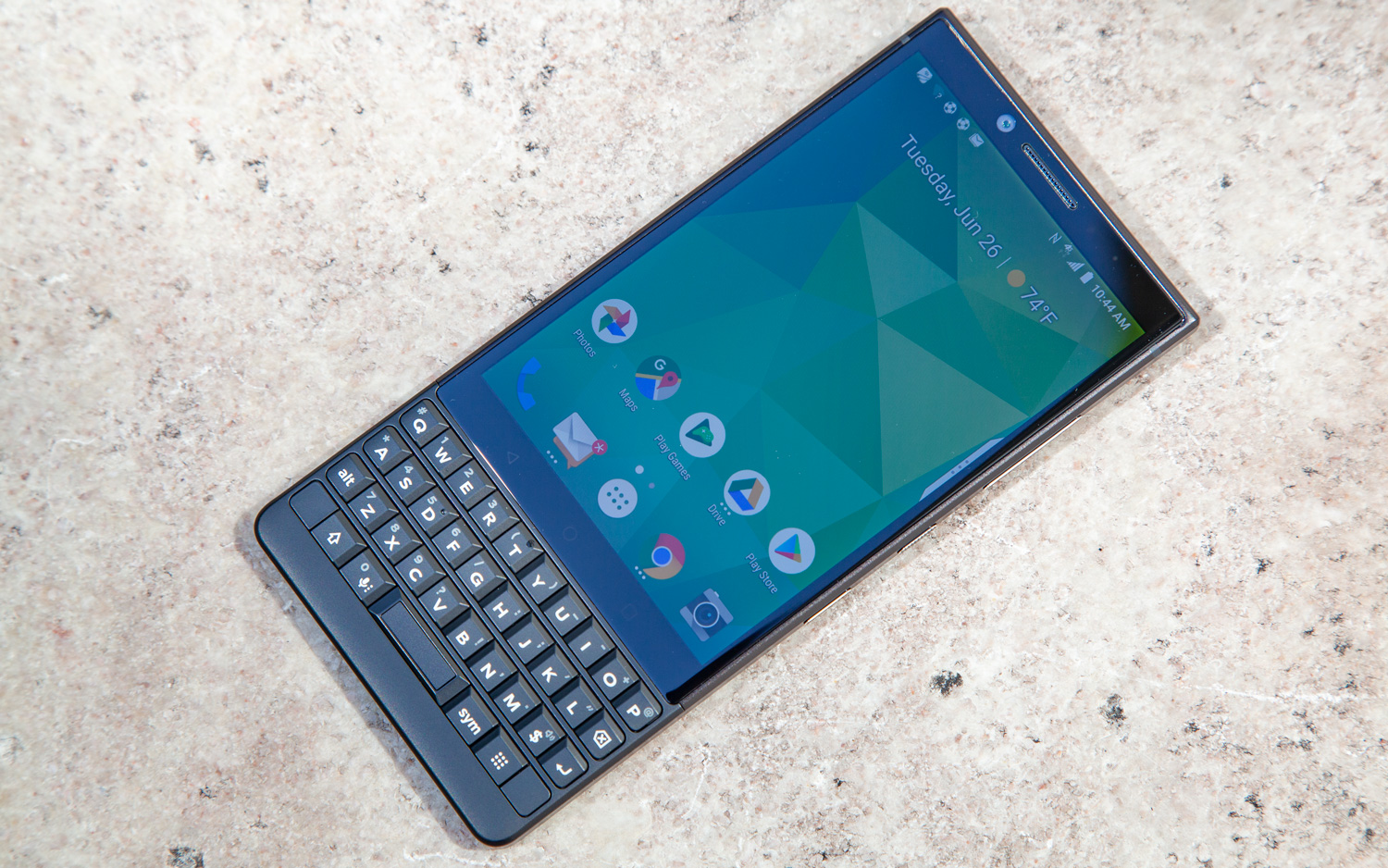
But then a funny thing happened: The KeyOne turned out to be quite good — the best BlackBerry in years, with a big battery, solid enough performance, secure software and, of course, a satisfying and innovative physical keyboard.
TCL's latest BlackBerry, the Key2, surely won't win over the majority of iPhone, Pixel and Galaxy customers. But then, it shouldn't. Like its predecessor, the Key2 is a specialized tool made for specific users, for whom a physical keyboard still holds cachet. And if you count yourself among their ranks, this phone won't disappoint you.
Price and Availability
BlackBerry is asking $649 for the Key2, which is $100 more than the KeyOne initially cost. The Key2 has the same 64GB of storage, but RAM has been doubled from the previous 3GB to 6GB. A model with 128GB of built-in storage should become available at a later date, though the phone supports microSD cards for expansion up to 256GB.
The Key2 is GSM unlocked, meaning it will only work on networks such as AT&T, T-Mobile, MetroPCS and Cricket. Preorders begin Friday (June 29) and ship July 13 from Amazon and Best Buy.
Design: Form meets function
Smartphones have never been as powerful as they are now — nor have they been as homogeneous. As displays get larger, bezels get smaller and physical buttons are retired, there are progressively fewer avenues for industrial designers to demonstrate any creativity.
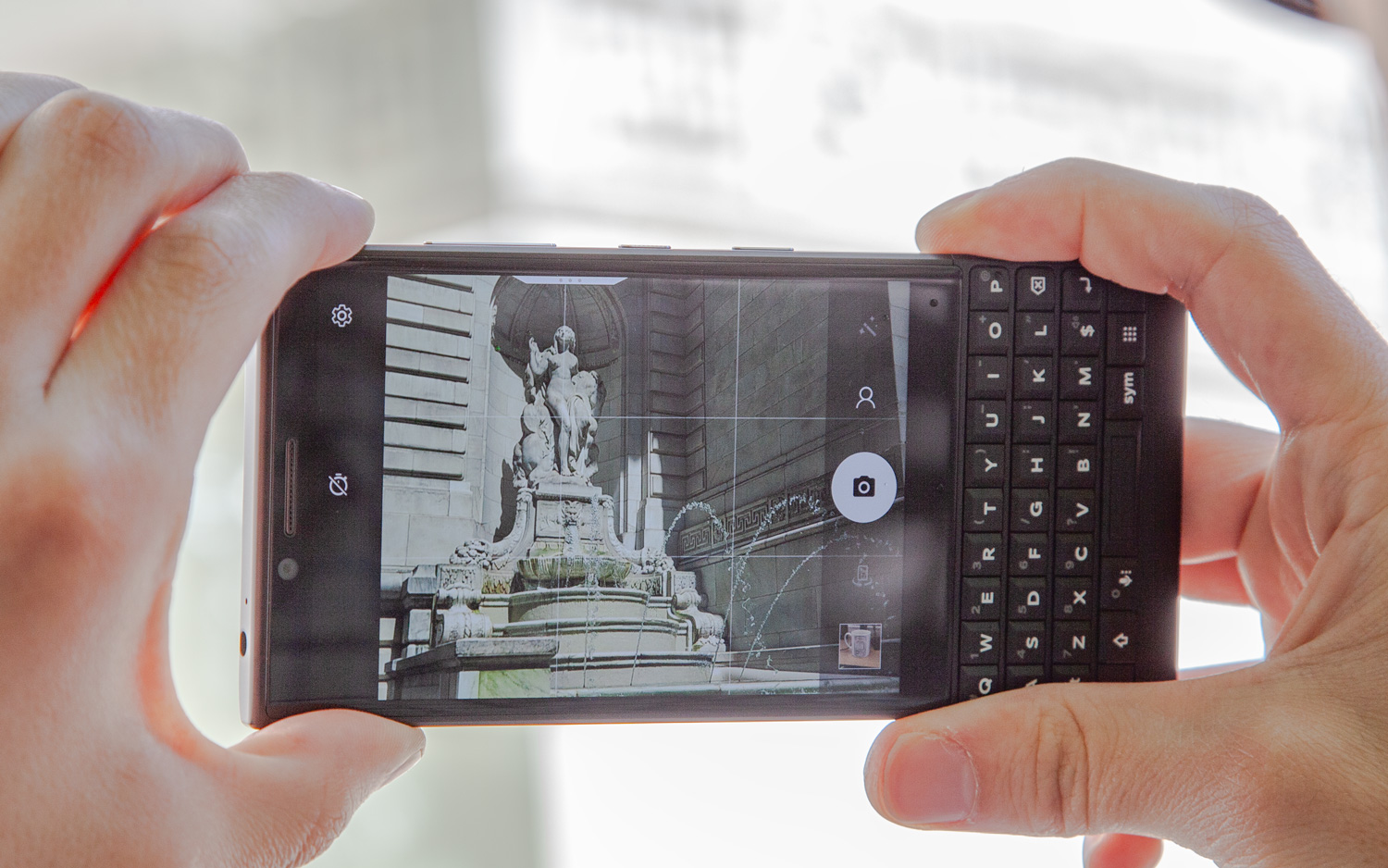
Kudos to TCL, then, for producing a phone in 2018 that doesn't ascribe to any derivative tropes. The Key2 sports similar dimensions to the KeyOne, though it's a hair taller. Unlike its predecessor, however, the Key2 bears no tacky chrome accents or mismatched shapes, edges and materials. This phone is neat and purposeful.
Get instant access to breaking news, the hottest reviews, great deals and helpful tips.
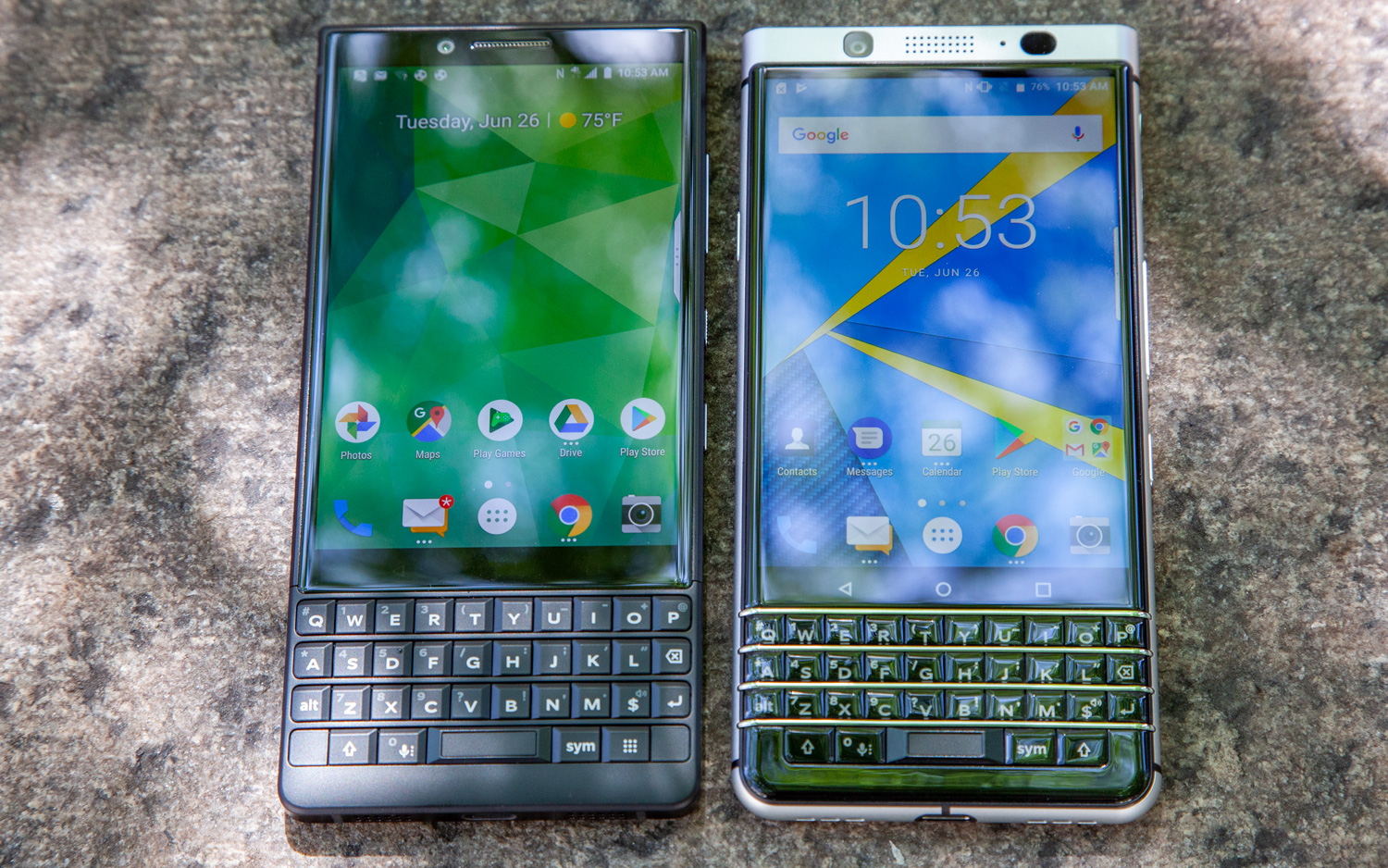
I love the simplicity and sturdiness of the all-aluminum body, which looks dapper in the black configuration.
TCL shifted up the Key2's 4.5-inch LCD panel and trimmed out some of the top bezel. This allows for a larger keyboard, separated by a row of capacitive buttons that now light up only when the phone is being actively used. The Key2 has none of the visual noise that marred the KeyOne, and it's a much cleaner-looking handset for it.
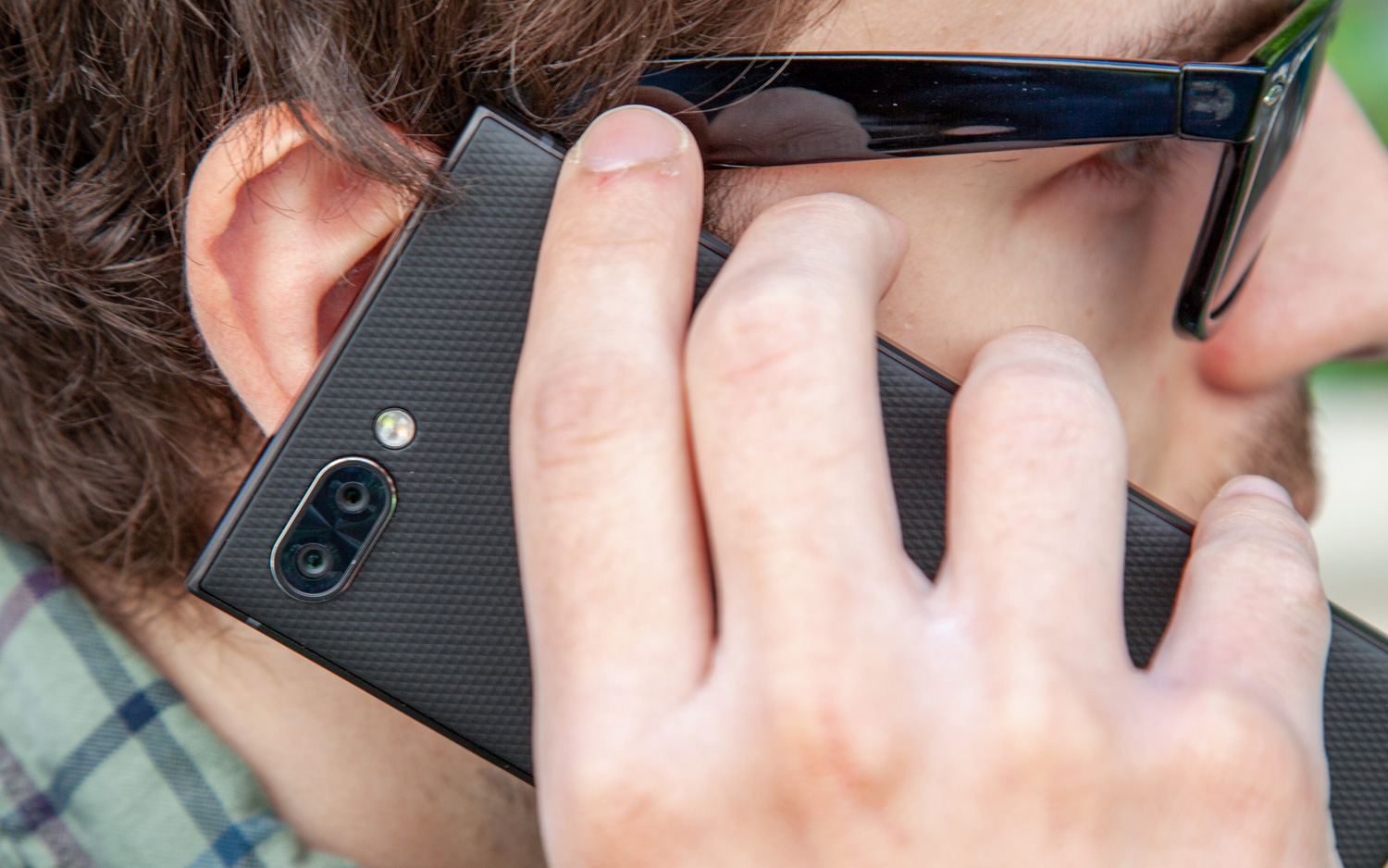
I love the simplicity and sturdiness of the all-aluminum body, which looks dapper in the black configuration. The Key2 retains its predecessor's 3.5-millimeter headphone jack as well as its soft-touch backing — though TCL remixed the pattern for the Key2.

It's a diamond texture, rather than the KeyOne's dimpled surface which was reminiscent of leather gloves. Stylistically, the change is debatable, though I find the new material to be a little grippier.
Keyboard: Physical meets smart
On paper, not a whole lot has changed in the Key2's keyboard. TCL increased the size of the keycaps by 20 percent, making for a roomier space for your thumbs to move about, but truthfully, that's not something you're likely to notice, unless you've got the KeyOne next door for comparison purposes.

Dig a little deeper, however, and it becomes clear that the Key2's physical input is better, as a result of a bunch of tiny enhancements. The keys themselves exhibit more tactile feedback when you press down on them, but also push back with less resistance. I found it easier to switch from my iPhone 7 to the Key2, rather than the KeyOne, simply because the newer phone's keys required so much less pressure to activate.
But then, the Key2's keyboard can do so many things a touch screen's can't. It functions as a trackpad, for example, which provides a great way of scrolling through webpages without obscuring or smudging the display. TCL applied a matte finish to the Key2's keys, unlike the glossy KeyOne. That makes for not only a more modern-looking device but also an easier surface for performing gestures.
As with the KeyOne, the spacebar conceals a fingerprint sensor that works about as well as any other fingerprint sensor. However, all the way to the right of it, TCL added a new button that BlackBerry fans won't recognize. The company reckons it represents the biggest change to the brand's physical keyboards in a decade, and it's called the Speed Key.
MORE: The Best Cellphone Plans for Families and Individuals
That seems like an ambitious name, but what the Speed Key does is actually very simple. Most of the other buttons on the keyboard can be combined with the Speed Key to launch a preprogrammed shortcut. It's not as earth-shattering an idea as TCL would probably like you to believe, but it can help you navigate your Key2 a little more quickly.
Let's be clear: As innovative as it is, the Key2's keyboard is not going to win over conventional smartphone users. But, if you have a penchant for a more traditional typing experience, you should feel right at home with this phone.
Display: Square but serviceable
There's no arguing the Key2's integrity as a loyal workhorse, but this is not a phone you'll want to watch a movie on — unless you like letterboxing, that is.
The display's squareness will certainly take some getting used to if you're coming from a conventional handset.
Rest assured, that's no knock against the quality of TCL's 4.5-inch, 1620 x 1080 LCD panel, which is about as accurate and vibrant as they come. But with an odd aspect ratio of 3:2 (the same as the original iPhone), the Key 2 is very clearly not designed for wide-screen viewing.
The display's squareness will certainly take some getting used to if you're coming from a conventional handset. I can't help but wonder what TCL could have achieved with a slide-out approach, like BlackBerry employed with the Priv in 2015. That may have provided the best of both worlds: A no-compromise, wide-screen display with the bonus of a physical keyboard when you wanted it.
MORE: Android Tips to Unlock Your Phone's Full Potential
We'll never know, though to TCL's credit, the company is frank about the Key2's purpose. Productivity is Job One of any BlackBerry, and simply put, the screen never hinders your ability to get things done. Text and graphics look crisp at a density of 434 pixels per inch (for reference, the iPhone X is just a smidge sharper at 458 ppi), while color reproduction is respectable for an LCD panel. The Key2 can also get reasonably bright, with a peak full-screen brightness of 533 nits. That's well above the 466-nit average among smartphones.
Camera: Double trouble
BlackBerrys have never been renowned for their photo-taking prowess, but TCL has banked big on the camera for the Key2. It's the first dual-lens arrangement in a BlackBerry-branded handset, and it allows for Portrait Mode and 2x optical zoom.
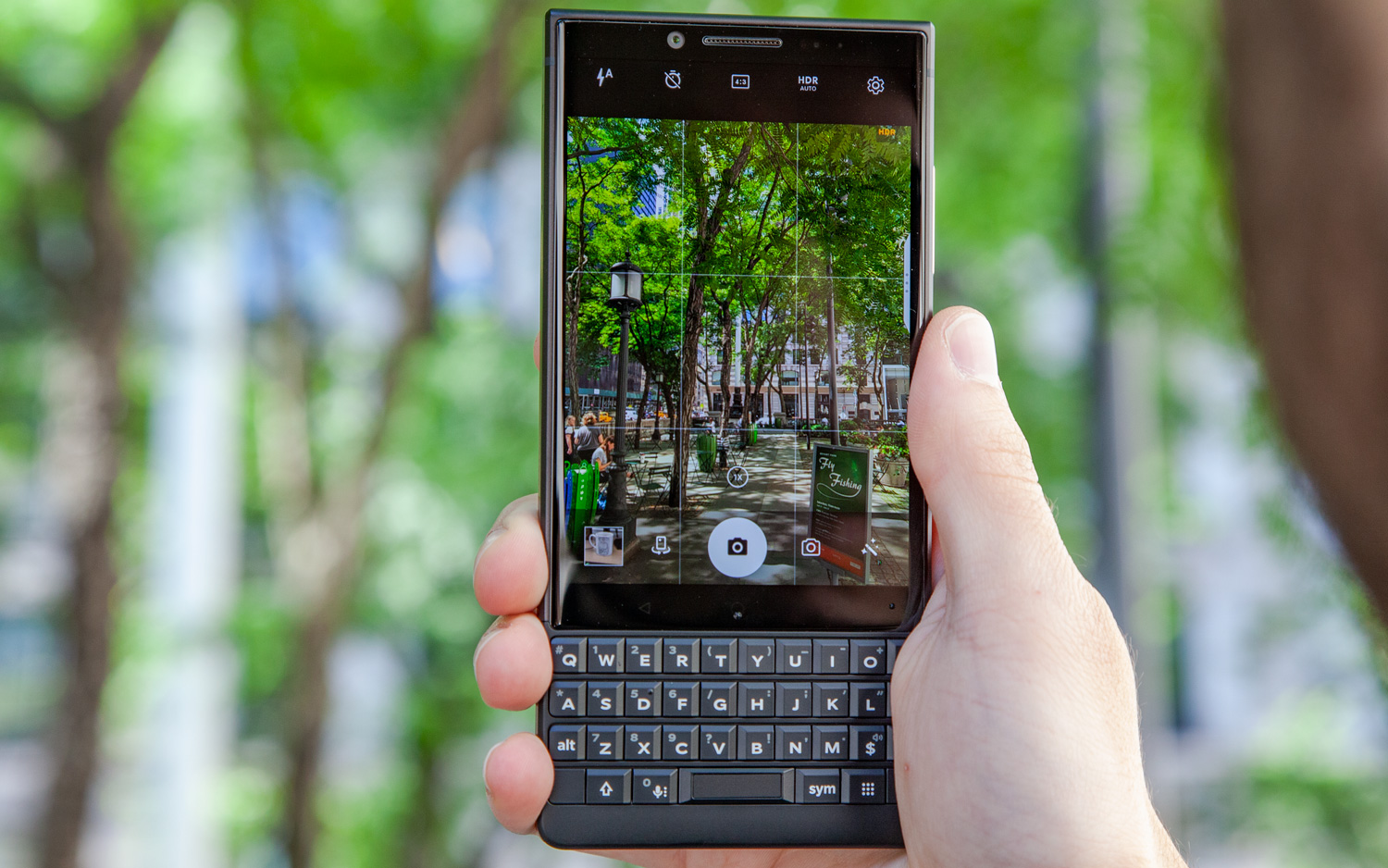
To make that possible, TCL gave the Key2 a pair of 12-megapixel shooters, utilizing an f/1.8 aperture for the primary one and an f/2.6 aperture for the telephoto lens. However, the Key2 doesn't employ optical image stabilization on either of its lenses, which puts it at a disadvantage compared to most high-end camera phones.
The lack of OIS also harms low-light photography — something that TCL says it focused on improving with the Key2. However, the wider aperture of the main lens couldn't help illuminate this dreary shot of a pair of poorly lit model cars. By comparison, the $529 OnePlus 6 produced a far less grainy result of the very same scene.
In a subsequent round of selfies, OnePlus' bargain proved yet again why it's a better shooter in dim conditions. The Key2's 8-MP, front-facing camera delivered a relatively underexposed portrait that muddied my hair and beard and consigned far too much of the frame to the shadows.
Outdoors on a sunny June morning, I used both phones' respective 2x optical zoom modes to capture a few stills of a flower. There are aspects of the Key2's photo I actually like here; There's a subtle blur to the background, and the darker hues paint a slightly more realistic shot in comparison to the OnePlus' boosted pinks. Yet, the image from the BlackBerry is also obnoxiously oversharpened and noisy. It looks like the product of a much older — or cheaper — phone.
Over time, I started to fear the Key2 would never pick up a win in this comparison. I had high hopes for its Portrait Mode — it's ultimately why any phone really has dual cameras, after all — but they were dashed the moment I attempted to snap a picture of my colleague Jorge. In fact, the Key2's might be the worst application of this feature of any phone I've tested, as a consequence of its general blurriness, poor white balance, grainy bokeh and underexposed highlights.
MORE: 5 Ways to Improve Your Android Phone's Battery Life
It's true that there's a lot of variation in camera quality, even among the most expensive devices. However, paying $649 should guarantee a base level of fidelity, and the Key2 doesn't even reach that. Most buyers probably aren't looking to BlackBerry for excellent photography, but that doesn't excuse TCL's poor showing here, especially at this price.
Performance: Last year's flagship
If we had one gripe with the BlackBerry KeyOne, it pertained to performance. That device was powered by a Snapdragon 625 processor and just 3GB of RAM — a combination that was sufficient at first, but quickly showed its limits over sustained usage.
Thankfully, TCL seems to have recognized this shortcoming, because the Key2 has a faster Snapdragon 660 chipset as well as double the RAM, for a total of 6GB.
That's an unusual combination, because phones with midrange processors tend not to have so much RAM. In fact, many handsets, like the Samsung Galaxy S9, LG G7 ThinQ and the Sony Xperia XZ2 actually have only 4GB of RAM tied to more powerful Snapdragon 845 silicon.

Regardless, TCL is adamant that upgrading the RAM before the processor was the right call for what its users really need. And, I'm actually inclined to agree. With 6GB of RAM, the Key2 is able to keep multiple processes and apps in the air simultaneously. When you think about all the services the modern enterprise user relies upon, that's a bit more valuable than additional top-end power to run the newest and shiniest games.
It also compares well to last year's high-end phones. In Geekbench 4, which measures overall system performance, the Key2 delivered a multicore score of 5,832. That's not terribly far off the Snapdragon 835-powered Google Pixel 2's score at 6,282 — though of course, newer handsets far exceed both devices.
However, the Key2 didn't shine where graphics were concerned. It totaled just 1,365 in 3DMark's Sling Shot Extreme OpenGL ES 3.1 test. It's worth noting that modern flagships, like the Galaxy S9, handily surpass a score of 4,000 here. The Key2 was able to run less demanding titles, like Injustice, on modest settings with no slowdown, though I wouldn't count on it for hard-core pursuits like PUBG Mobile.
BlackBerry Key2 Specs
| Price | $649 |
| OS | Android 8.1 Oreo |
| Screen Size (Resolution) | 4.5-inch LCD (1620 x 1080) |
| CPU | Qualcomm Snapdragon 660 |
| RAM | 6GB |
| Storage | 64GB/128GB |
| microSD slot | Yes |
| Rear Camera | Dual: 12 MP (f/1.8); 12 MP (f/2.6) |
| Front Camera | 8 MP |
| Battery Size | 3,500 mAh |
| Water Resistance | No |
| Size | 5.96 x 2.82 x 0.33 inches |
Battery Life: A slight step back
The Key2 comes equipped with the same 3,500-mAh battery that delivered an astonishing 12 hours and 47 minutes of longevity when we tested it in the KeyOne.
Just like before, that battery still supports QuickCharge 3.0 and is able to take the Key2 from empty to 50 percent in a half hour. However, TCL has bolstered it with extra software that learns your usage habits and recommends when to top up as you're progressing through your day. Some might appreciate the insight it provides, though in my experience, it didn't really tell me anything I didn't already know from looking at the battery icon.
Ultimately, the software is negligible, given just how long the Key2 can endure on a charge. TCL's latest BlackBerry ran for 11 hours and 9 minutes of continuous web surfing on LTE. While it's disappointing that that's about an hour and a half shorter than the KeyOne's runtime, 11:09 is still well beyond the smartphone average of 9:48, and up there with the likes of the Pixel 2 (11:07) and iPhone 8 Plus (11:16). In other words, you should still be able to eke out two days of usage, if you're careful.
Software: Oreo plus security
BlackBerry may have ceded control of its hardware to TCL, but it's still responsible for designing the software for its phones. In fact, if the connection between the two companies is compromised, TCL's production line halts.
So yes, BlackBerry still takes software, security and authenticity very seriously. The Key2 launches with Android 8.1 Oreo, with two years of monthly security patches in store, as well as BlackBerry's commitment to deliver hotfixes for more glaring concerns and vulnerabilities as soon as they are discovered. The phone will also eventually get one major software update to Android P, though the prospect of another letter upgrade is uncertain.
The Key2's flavor of Oreo is pretty close to stock. However, BlackBerry has certainly put its stamp on Android, with a number of additional apps and services. DTEK is probably the most notable; it serves as the control panel for all the Key2's security monitoring tools. From here, you can keep an eye on which apps are using and abusing certain permissions, and DTEK will even notify you which apps are behaving erratically. DTEK also awards your phone with a security score and suggests ways to improve it.
It helps to think of DTEK not so much as offering an extra layer of security as providing preventive care. However, BlackBerry's other additions, like Privacy Locker, Privacy Shade and Redactor, offer more immediate value.
It helps to think of DTEK not so much as offering an extra layer of security as providing preventive care.
Privacy Locker allows you to store photos, media and other files in an encrypted folder that can be unlocked only with a fingerprint or password. The Key2 is not the first phone to do this, of course, though BlackBerry's version of the feature also incorporates Firefox's Focus browser, which auto-deletes web history when you close the app.
Privacy Shade acts as a window through which you can view content on screen, where everything else around it is obscured to onlookers. It's great for reading supersensitive material while out in public, though what's even more useful about it is Redactor — a markup-style feature that lets you conceal details and blocks of text from screenshots. It's a feature every phone should have, regardless of whether the company is particularly concerned with enterprise-level privacy or not.
MORE: 5 Ways to Speed Up Your Android Phone in Under 5 Minutes
Otherwise, BlackBerry's hallmark software enhancements return on the Key2. That includes BlackBerry Hub, which aggregates all communications across email, social and chat apps in one unified inbox. The Convenience Key, a button introduced on the KeyOne and then again on the all-touch screen BlackBerry Motion, now supports additional profiles, so the shortcuts you program dynamically change, depending on whether you're home, at work, in a meeting or even in the car.
Bottom Line
The physical keyboard is polarizing, and so it follows that the Key2 is a very polarizing phone. We've been surprised with some legitimately good BlackBerrys over the past several years, and you can assuredly add the Key2 to the list. This is yet another great handset for the right person.
Of course, that always seems to be the caveat with BlackBerry. The best thing I can say about TCL's still-nascent tenure at the helm of manufacturing is that it hasn't skipped a beat. The Key2 may not technically be made by BlackBerry, but it sure as hell feels like a member of the family, thanks to its solid keyboard, lengthy battery life and security and productivity features that you might actually use.
The Key2 isn't a mediocre phone with a good physical keyboard — it's a good phone that happens to have a physical keyboard. Still, $649 is a lot to ask for a device with anything less than a leading processor and top-notch camera. You won't find either here, and frankly, it's unclear to me how TCL can justify the $100 premium over last year's already pricey predecessor — even if the Key2 still is truly one of a kind.
Credit: Tom's Guide
Adam Ismail is a staff writer at Jalopnik and previously worked on Tom's Guide covering smartphones, car tech and gaming. His love for all things mobile began with the original Motorola Droid; since then he’s owned a variety of Android and iOS-powered handsets, refusing to stay loyal to one platform. His work has also appeared on Digital Trends and GTPlanet. When he’s not fiddling with the latest devices, he’s at an indie pop show, recording a podcast or playing Sega Dreamcast.
